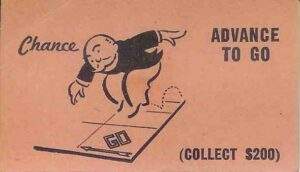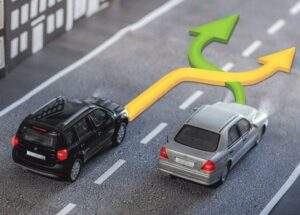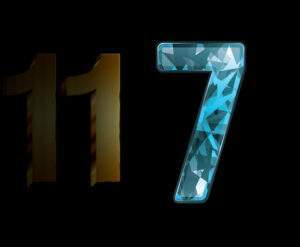Table of Contents
Nonconsumer Debt + No Means Test = Chap 7 Discharge? A Deep Dive
A Look at Surplus Income and Nonconsumer Debt, Skipping the Bankruptcy Means Test, and if the Case Law Leads to Chapter 7 Success
Does having primarily nonconsumer debt give someone a shortcut to Chapter 7 discharge? Generally, Chapter 7 is for people who can’t afford to repay debt. There’s a means test that makes someone eligible for Chapter 7. However, there appears to be a loophole that allows someone with primarily nonconsumer debt to skip the means test. Does that shortcut mean high-income debtors with primarily non-consumer debt are on easy street to Chapter 7 discharge?
The Issue: Why Nonconsumer Debt May Help Chapter 7 Discharge
Debt can be categorized as either consumer or nonconsumer. The big difference is if the debt is nonconsumer, you can skip the means test, and squeeze into Chapter 7 bankruptcy.
What is the Bankruptcy Means Test?
The bankruptcy means test is the gatekeeper for Chapter 7. Many people seek Chapter 7 bankruptcy because they won’t have to repay their debt with monthly income, but it has other traps, like potentially taking your stuff.
So, how do I pass the bankruptcy means test

To pass the bankruptcy means test, you need to come in under the median income limits, or otherwise if over, show you can’t afford to repay debt. For people who earn high income, this makes Chapter 7 hard to get into. The more money you earn, the more likely you can afford to repay some of your debt in a Chapter 13 bankruptcy. Why? Because it’s fair and equitable. And Congress said so. (Chapter 13 bankruptcy isn’t the worst thing in the world, though, and provides a solution for someone with the ability to pay).
There are a few loopholes in the bankruptcy means test, and one of them helps you avoid it altogether. If someone has more nonconsumer debt than consumer debt, they don’t have to pass the bankruptcy means test. They can skip it and, in theory, just file Chapter 7, since the means test is only for consumer bankruptcy cases.
What are examples of nonconsumer debt?
Nonconsumer debt is defined in the negative: as not being consumer debt. Consumer debt is defined in 11 USC 101(8) as, “debt incurred by an individual primarily for a personal, family, or household purpose.” Consumer debt is all the things you think of why people typically file bankruptcy: credit cards which were used for groceries, clothes, gasoline and other household goods, mortgage and car loans, and other things for personal or family use.
A nonconsumer debt would be those with a profit motive or business purposes. “The courts generally ascribe a business purpose, rather than a personal, family or household purpose to debts which are incurred `with an eye toward profit’ and which are `motivated for ongoing business requirements.'”) (citations omitted)(emphasis in original)” In re Cherrett, 523 BR 660 (9th Cir BAP, 2014), finding a mortgage was a nonconsumer debt because the purpose in obtaining the Housing Loan was primarily business/employment-oriented.
One example of nonconsumer debt is tax debt. In re Westberry, 215 F. 3d 589 (6th Cir 2000). See also In re Decker, 535 B.R. 828 (Bankr Ct, AL 2015). Business debt is that which is clearly incurred with a profit motive, as are investments. Another example can be student loans, if incurred with a profit motive from an existing business. In re Ferreira, 549 BR 232 (Bankr Ct, EDCA 2016), applying Cherrett and factors from Palmer, 542 BR 289 (Bankr Ct, CO 2015).
What if it’s mostly nonconsumer debt? Does that mean, even with a budget surplus and the ability to repay, debtors can skip to Chapter 7 discharge? Read on.

If there’s no means test because of nonconsumer debt, can anyone file Chapter 7 and get a discharge?
That’s the issue. Filing bankruptcy with primarily nonconsumer or business debt may let someone skip the means test. However, it may seem unfair to creditors if it also means they advance to Go, collect $200 and get a discharge. Is there another hurdle debtor must leap?
Enter Section 707.
Remedies for Cases that Don’t Belong in Chapter 7 by Creditors
Dismissal under Section 707(b) of the Bankruptcy Code
Dismissal of a Chapter 7 (or conversion to a Chapter 11 or 13) is covered 11 USC 707. Section 707(b)(1) of the US Bankruptcy Code, reads, in pertinent part:
“…the court… may dismiss a case filed by an individual debtor under this chapter whose debts are primarily consumer debts… if it finds that the granting of relief would be an abuse of the provisions of this chapter.”
And the means test with high income can lead to the presumption of abuse under 707b. Skipping the means test because of business debt or nonconsumer debt avoids getting dismissed under 707(b)(1).
Section 707(b)(2) then lays out many of the components of the means test. If 707b1 gets skipped, then, it seems, so does 707b2.
Section 707(b)(3) explains that under b1, a court can consider if a case was filed in bad faith, or look at the totality of the circumstances of the debtor’s financial condition. Again, with 707b1 knocked out of play, so is 707b3.
Are we home-free then, coasting to Chapter 7 discharge with no way the court can dismiss a Chapter 7 bankruptcy that has tons of monthly income with which to repay debt? Not quite.
Forced Conversion to another Chapter using Section 706 of the Bankruptcy Code
If the government can’t use Section 707 to dismiss a debtor’s case, there’s a way to force the debtor out of Chapter 7, and into another chapter where the debtor repays their debts. There is a trend for 706(b) motions to force a conversion of a case to a different chapter, over debtor’s objection and against his will. Section 706 says that the court can force conversion of a Chapter 7 to a Chapter 11 case (but not Chapter 13). There, forced into Chapter 11, a debtor could repay their debts.

In a post-BAPCPA case, a bankruptcy court ruled that a forced Chapter 11 conversion would be in the best interests of the creditors, and also the best interests of the debtors, who vehemently opposed it. “As a result, they have monthly disposable income with which they can fund a plan that would pay their creditors more than would be received within the chapter 7 case. A chapter 11 will maximize recovery not only for the IRS, but for all creditors.” In re Decker, 535 BR 828, 843 (Bankr Ct, Alaska 2015), following In re Gordon, 465 B.R. 683, 692 (Bankr.N.D.Ga. 2012) and In re Baker, 503 BR 751 (Bankr Ct MDFL 2013).
A similar analysis was used in South River Capital v Kane, 616 F. Supp. 3d 977 (Dist. Court, NDCA 2022), when the court cited Decker, and then reviewed the ability of the debtor to repay debt, grounds for reconversion, the confirmability of the plan in Chapter 11, and whether the parties would benefit from a forced conversion. After considering the factors, the district court affirmed the ruling of the bankruptcy court to deny conversion. Id. at 990. Facts matter, your mileage may vary.
Sure, debtors can try dismissal or conversion out of Chap 11 under Section 1112, but two things.
First, unlike the absolute right to dismiss Chapter 13 in the 9th Circuit, once in Chapter 11, the debtor does not have an absolute right to dismiss the case. Instead, they have to ask the court, which looks at the best interests of the creditors. And with a lot of monthly income from the debtor showing an ability to repay debts, it is in creditors’ best interests if the Chapter 11 bankruptcy continues.
Second, Section 1112 also says that a case may not be converted to a case under another chapter of this title unless the debtor may be a debtor under such chapter. If it’s already been ruled debtor isn’t eligible for Chapter 7, they can’t just jump back to a place where they were forced out. In theory, debtor can try to convert from his new Chapter 11 to Chapter 13 (to where he couldn’t be forced per 706c), and then use his absolute right to dismissal from Chapter 13.
What about the Thirteenth (13th) Amendment, Bankruptcy, and Forced Conversion?
There is a strong Thirteenth Amendment argument against forcing someone to work in a bankruptcy to repay their debts. This prohibition against involuntary servitude has been ruled on as recently as 1988 by the United States Supreme Court. U.S. v. Kozminski, 108 S.Ct. 2751 (Sup Ct 1988). However, at least one bankruptcy court has held that a forced conversion isn’t a 13th amendment violation: “The Court concludes the mere conversion of the case from Chapter 7 to Chapter 11 is not a type of physical or legal coercion constituting involuntary servitude. ” In re Gordon, 465 BR 683 (NDGA 2012).
The Gordon case was cited locally in the Ninth Circuit, but then distinguished when the court found constitutional arguments unripe, cited the debtor’s ability to repay, and forced conversion into Chapter 11. In re Parvin, 538 BR 96 (WDWA 2015).
While it seems the Thirteen Amendment ban against involuntary servitude hasn’t prevailed in a forced conversion, this may be challenged by another debtor in the future.
Courts finding bad faith under 707(a)
Using Section 706 to force a conversion to Chapter 11 is “not conditioned upon any specific factors, or limited to any subset of debtors.” Decker at 835.
As such, it would appear to be the cleanest way to deal with debtors who had the ability to repay debt. Other courts, though, have found the 707 standard of abuse can apply, even if the means test doesn’t. Remember, the means test above and abuse was all under Section 707(b).
Enter 707(a).
The court may dismiss a case under this chapter only after notice and a hearing and only for cause…
“The statute does not define the term cause,’ beyond setting forth three specific examples. However, the introductory word ‘including’ means that these three types of ’cause’ are nonexclusive.” In re Cook, 599 BR 323 (Bankr Ct, WDAR 2019)(internal cites omitted).
And with that, courts are free to dismiss Chapter 7 bankruptcy cases. Let’s look at examples.
Court cases dismissing Chapter 7 bankruptcy cases for ability to repay debts

In re Rahim, 442 BR 578, 584 (EDMI 2010): “There is cause to dismiss this bankruptcy case under 11 U.S.C. § 707(a). The debtors did not file their case in good faith. Their annual income of over $500,000 compels the conclusion that they could pay a meaningful dividend to their creditors if they would make the effort to reduce their lavish expenses that fairness to their creditors requires. Nothing in the bankruptcy code suggests that a debtor who has primarily business debts but who can pay those debts is entitled to chapter 7 relief.
It’s a pre-BAPCPA case, but the rationale of the Sixth Circuit still applies:
Those courts which have reviewed the legislative history, have generally concluded that, in seeking to curb “substantial abuse,” Congress meant to deny Chapter 7 relief to the dishonest or non-needy debtor…. Among the factors to be considered in deciding whether a debtor is needy is his ability to repay his debts out of future earnings.
In re Krohn, 886 F. 2d 123, 126 (6th Cir 1989).
After BAPCPA, and more locally, the Krohn thinking was summarized like this:
Before the 2005 amendments to the Bankruptcy Code, a debtor’s case could be dismissed for substantial abuse based upon either lack of honesty or want of need. See In re Behlke, 358 F.3d 429 (6th Cir.2004); In re Krohn, 886 F.2d 123 (6th Cir.1989). The 2005 amendments codified the lack of honesty and want of need factors under § 707(b)(3). Pursuant to that new statute, a debtor’s case can be dismissed for abuse upon either bad faith (i.e. lack of honesty) or totality of the circumstances of the debtor’s financial situation demonstrates abuse (i.e. want of need)
In re Clark, (NDCA 11-13612, 2012). To continue quoting Clark,
However, courts that have conducted this analysis have recognized that the section is “best understood as a codification of pre-BAPCPA case law, and as such, pre-BAPCPA case law is still applicable when determining whether to dismiss a case for abuse.”
Id. So there the court is saying that the “needy” part that’s now part of the totality of the circumstances test is not changed, and that pre-BAPCPA law interpreting this still applies.
Having unlocked the door to reach back to pre-2005, that leads the court to In re Price, 353 F. 3d 1135Â (9th Cir 2004).
The Price is Right?
There in Price, the Ninth Circuit laid out a bunch of factors to determine neediness:
- Whether the debtor has a likelihood of sufficient future income to fund a Chapter 11, 12, or 13 plan which would pay a substantial portion of the unsecured claims;
- Whether the debtor’s petition was filed as a consequence of illness, disability, unemployment, or some other calamity;
- Whether the schedules suggest the debtor obtained cash advancements and consumer goods on credit exceeding his or her ability to repay them;
- Whether the debtor’s proposed family budget is excessive or extravagant;
- Whether the debtor’s statement of income and expenses is misrepresentative of the debtor’s financial condition; and
- Whether the debtor has engaged in eve-of-bankruptcy purchases.
Price at 1139-1140.
Factor one — the ability to fund a 13 — gets right to the heart of the ‘budget surplus’ issue. Which the Ninth Circuit drives home with this: “The primary factor defining substantial abuse is the debtor’s ability to pay his debts as determined by the ability to fund a Chapter 13 plan.” Id.
Price has been cited by the Ninth Circuit post-BAPCPA, most notably in In re Cherrett, 873 F. 3d 1060 (9th Cir 2017), where the facts and issues are slightly different and it was using it for consumers vs nonconsumer. So it’s still alive.
Back in 2012, it was cited by the BAP in In re Ng, 477 BR 118 (9th Cir BAP 2012), which ruled, “Since Debtors had the ability to pay such a significant amount to their creditors, under the totality of the circumstances, granting them relief under chapter 7 case would be an abuse, and the bankruptcy court properly dismissed the case under § 707(b)(3)(B).” Id. at 130.
Locally here in the Central District of California, Judge Clarkson reached a different result, using the Price factors, but this is very fact-dependent, in In re Suttice, 487 BR 245 (Bankr. Ct, CDCA 2013).
But Padilla, 707a, and For Cause
In the Ninth Circuit, the “for cause” in 707(a) has been interpreted strictly. Where other courts see the “including” as starting a non-exhaustive list, the Ninth Circuit has ruled “cause” must fit a two-part test: 1) is the conduct contemplated by any specific Code provision for Chapter 7; and if ‘no’ then 2) whether the circumstances asserted otherwise meet the criteria for cause for discharge under § 707(a). In re Sherman, 491 F. 3d 948, 970 (9th Cir, 2007), summing up it’s own rule from In re Padilla, 222 F.3d 1184, 1193-1194 (9th Cir, 2000).
In Padilla, the Ninth Circuit reviewed a ‘bust-out’ scheme (otherwise known as ramping up debt before filing). It noted that Chapter 11 and 13 bankruptcies have good faith requirements written in. Id. at 1192-1193. Since it’s missing in Chapter 7 as a statutory requirement, the 9th Circuit used its test as a result of statutory interpretation.
Going back to the two-prong test above, because the “bad faith” the bankruptcy court used as grounds to dismiss was specifically addressed in 707(b), the conduct is tied to specific provision and didn’t pass the first prong, and bad faith could not be used for ’cause’ under 707(a).
The Ninth Circuit ruled: “Therefore, Padilla’s credit card bust-out, a consumer debt, is a type of misconduct contemplated by § 707(b). We hold that Padilla’s alleged credit card “bust out” did not constitute cause under § 707(a) and thus the bankruptcy court’s dismissal of Padilla’s petition pursuant to § 707(a) was improper.” Id. at 1194.
Does Padilla Take Precedence over Price?
There seem to be two different rules, and there’s celebration in some quarters that Padilla decided in 2000 prevents a Chapter 7 dismissal for bad faith as cause under 707a in the Ninth Circuit. However, Price (2004) directly cited Padilla, and then distinguished from it:
“Price contends that Padilla “makes it crystal clear that the framers of § 707(b) had no intention of preventing a consumer from using the bankruptcy code to discharge his trade debt.” Padilla did not involve § 707(b). It held that bad faith per se does not constitute cause for dismissal under § 707(a). Id. at 1194. It is true that Padilla discussed the general rationale underpinning § 707; however, it did not hold that a dismissal for substantial abuse under § 707(b) cannot occur if the debt to be discharged is primarily trade debt.”  Price at 1141.
All to say, while some people rush to conclude that their nonconsumer debt means “chapter 7 bankruptcy… here I come!” However, it doesn’t necessarily make it eligible for discharge, or worse, a forced conversion into Chapter 11.
While I’m a bankruptcy attorney who advocates for debtors to get a discharge, it’s not crystal clear that Padilla or any other ruling exists as a magic case that gets away from the Price factors, absent facts like Suttice. Perhaps that’s a ruling for the Ninth Circuit for another day.
If you found this helpful, please consider linking to this site.





